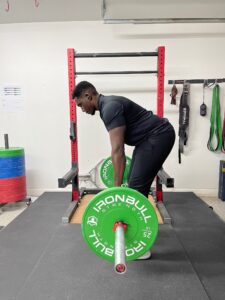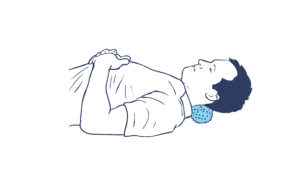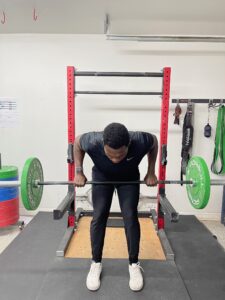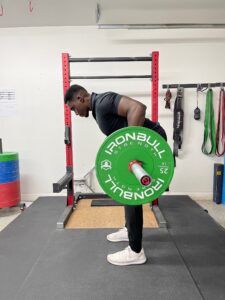golf exercise
Hey Everyone!
In this week’s golf exercise we will be addressing the pectoral muscles and a little bit of the triceps and deltoids. In addition, the glute bridge part of the exercise also help help the strength, hypotrophy and stability of lower core. The reason i’m addressing the upper body this week is to help with muscle tone and help with power can produce in the downswing of your golf swing. And the stability you build in the glute bridge position will help with posture and increase more balance for the golf swing.
Benefits:
When performing this workout, you are decreasing stress on your lower back when compared to a traditional bench press with the barbell or dumbbell. In addition, fat tends to collect in the lower region of the pectoral muscles in men as they age, so this exercise helps a lot in slowing down that process. Moreover, you will also reduce stress on the shoulders, ability to increase more weight and transfer that strength onto other chest exercises.
Drawback:
One con about this exercise is that if you have never done it before you will experience an awkward period trying to master it. This can lead to less optimal lifting mechanics.
How to Perform The Exercise:
- On flat floor with a yoga matt, lye down with dumbbells on each arm and bend your knees to get into the glute bridge position.
- Once the Gluteus Maximus is engaged, allow the the weight lean on your shoulder blades and keep your head on the ground.
- When ready, have your arms with the dumbbells extended and bend the elbows and low the arms to the floor.
- Press back up while the core braced in the glutes and abdomen. And then continue for 6-8 reps.
For more great exercise to strengthen the links in the kinetic chain of your golf swing click here for more wisdom.
And if you are looking for more professional help, get started today with Wisdom in Movement or Golf Fit Pro and start your fitness journey today.
One of the biggest misconceptions and one of the aspects of instruction that has been misunderstood is weight shift and the proper engagement of the human kinetic chain. In our premium channel, we have a couple series called “kinetic chain series”. Moreover, you gain an “unstoppable momentum series” because when you are able to initiate the kinetic chain properly, it is literally unstoppable!
Golf Tips • Golf Instruction • Golf Lessons • Homepage | Premium Page
Go check out Edouard’s NEW GOLF CHANNEL CALLED GOLF LEGACY right here Wisdom in Golf Legacy
00:00 Shawn Clement introduces the golf lesson w/ Sav & Mu
01:19 Shawn Clement how to properly weight shift in the golf swing
08:28 Allow the body to turn in the backswing
10:30 Drill: Savvy walking and cutting grass w/ golf club
13:35 Drill: Compress the Volleyball w/ Mu
14:48 Using proper weight shift with the weight of the arm-club unit
18:37 Shawn concludes the golf lesson
Proud Partner of The Royal Bank of Canada – The Royal Bank of Canada
Proud Partner of Callaway Golf – Callaway Golf
Proud Partner & Contributor of Golf WRX – Golf WRX
Golf’s Perfect Imperfections Episode: More Speed with Wisdom in Golf
Shawn Clement Head Director of Development at The Royal Quebec Golf Club / Shawn Clement Directeur Général du Développement Au Club de Golf Royal Québec: Golf Pro
Follow Me at ☞ Instagram
☞ Twitter
☞ Facebook
Follow Savvy at ☞ Instagram
For more great wisdom like this click here for more!
Hi everyone!
One aspect of golf that gets most critical analysis is a golfer’s posture and I have felt the scrutiny in way or the other. In this weeks exercise I wanted to focus on the neck muscles and structure. Moreover, the neck is part of the body tends to get neglected is one’s ability to ensure their neck is stable and strong in the golf swing or at set-up over the golf ball.
In addition, today I wanted to share with you a great exercise taught to me from Golf Fit Pro (Nick Randall) and how you can save your neck from getting left out from golf fitness. The muscles responsible for holding your neck and head in good posture are deep in the front of the neck and strengthening them can be tricky.
Benefits:
The combination of a forward head position and a tight / weak neck presents a twofold issue for rotation in the backswing. Firstly, the head hanging forward and low inhibits our ability to rotate through our upper back because our spine is being pulled out of the neutral position from where is rotates most efficiently. Secondly, the tight muscles around the neck reduce the ability to rotate in our upper spine, often leading to unwanted head movement away from the ball in the backswing.
How its performed:
Placing a piece of light resistance tubing (or the Gravity Cap) over the crown of your head, aim to push up against the tubing, drawing your spine out of your pelvis and standing stall. Retract your chin and feel the deep muscles in the front of your neck working. Hold for 30 seconds, rest for 10 seconds and repeat.
For more great exercises like these, please follow this link here and gain more wisdom on golf fitness.
Author: Nick Randall
Neck pain in a common issue in modern populations, with the root cause often related to hours on end in a fixed forward head posture. This position leads to a shortening of the extensor muscles at the back of the neck and a weakening of the deep muscles in the front. The result is often pain and discomfort in the neck, sometimes accompanied by headaches.
From a golf perspective, the combination of a forward head position and a tight / weak neck presents a twofold issue for rotation in the backswing. Firstly, the head hanging forward and low inhibits our ability to rotate through our upper back because our spine is being pulled out of the neutral position from where is rotates most efficiently. Secondly, the tight muscles around the neck reduce the ability to rotate in our upper spine, often leading to unwanted head movement away from the ball in the backswing.
If you suffer from a tight neck and would rather play golf without pain and a shortened back swing, then try following the steps outlined below.
STEP 1 – SELF MASSAGE
Grab a spiky ball or similar massage tool, and place it under the ridge of your skull, to either the left of right of the spine. Support the weight of your head with a hand placed behind the head if needed, your neck muscles should be relaxed.
Slowly turn your head from left to right and nod up and down. Maintain a slow rhythm and aim for a deep massage. Every 20 seconds switch the position slightly and repeat until you have covered both sides.
STEP 2 – MASSAGE
Stretch 1 – Nose to armpit. Gently pull your nose down towards your armpit, feeling the stretch in back of your neck. Aim to stand tall throughout stretch, trying not to slump forward. Hold for 30 seconds each side.
Stretch 2 – Ear to Shoulder – Tilt your head to one side, moving ear towards shoulder, feeling stretch down the side of your neck. Add some light pressure to your head with the opposite hand. Hold for 30 seconds each side.
STEP 3 – STRENGTHEN DEEP NECK MUSCLES
The muscles responsible for holding your neck and head in good posture are deep in the front of the neck and strengthening them can be tricky. The best method I have used was taught to me by Carolyn Richardson of GravityFit.
Placing a piece of light resistance tubing (or the Gravity Cap) over the crown of your head, aim to push up against the tubing, drawing your spine out of your pelvis and standing stall. Retract your chin and feel the deep muscles in the front of your neck working. Hold for 30 seconds, rest for 10 seconds and repeat.
When performing any of these exercises, stop immediately if you feel dizzy or experience any strong pain.
You can check out more of Nick’s articles and services here:
For more great articles like this follow this link for a great time.
Co-authored by: Wisdom in Golf
About the Author:
Nick is a strength and conditioning coach contracted by PGA Tour Players and national teams to deliver his unique brand of golf fitness services. Nick offers the opportunity to access his knowledge and service offering to the rest of the golfing world through the following avenues:
So you’ve had the desire to improve your game and feel like it’s a good time to get busy with some physical training. Making a plan and getting a training program sorted out are next on the agenda, but you might feel a bit overwhelmed by the contrasting opinions and recommendations out there relating to golf fitness. If you are anything like the average golfer, then thoughts like this might be running through your head:
- Will I need to join a gym?
- How can I move my hips like Rory?
- Is stretching good for me or not?
- Should I get a trainer?
- Maybe I’ll get the “Ab Flex Twisty Turner Fat Shredder Pro 9?” (the answer is a definite NO to this one!)
All these doubts essentially boil down to four key questions
- What exercises are best for you?
- How many sets and reps should you do?
- When should you do them?
- How much load should you use?
Answering these four questions forms the nuts and bolts of constructing a training program. If we can figure out how to answer these questions best, then we are most of the way to getting you a decent training program.
What Exercises Are Best For You?
Everyone has an opinion on what exercises golfers should or shouldn’t do. If you listened to everybody you’d be either in the gym all day doing 73 different exercises per workout, or you’d be frozen to the spot thinking about why NOT to do them all!
A good rule of thumb is to include exercise variations of the following primal movements
- Squat, Lunge, Push, Pull, Bend/Hinge, Brace
You’ll also want to target improvements in the following areas:
- Strength
- Stability
- Mobility
- Posture
This will ensure a balanced workout that incorporates a range of different movements and improves the way your body performs during the golf swing.
How Many Sets and Reps Should You Do?
Again, opinions can be pretty polarized here. Some say do 5 reps for max strength or power, while others reckon that endurance is key and recommend doing 20 reps per set. I would advise to simply take the middle ground on this one. Aim for 8-to-12 reps and 2-to-3 sets and you can’t go too far wrong.
When Should You Do Them?
This really depends on a lot of your lifestyle and when you play golf during the week. Let’s use the example of someone who has some spare time during the week to exercise and plays their competitive round on a Saturday. In this case, go for three workouts per week and try to have a rest/recovery day on Friday. A schedule I often recommend is Monday, Tuesday, Thursday.
How Much Load Should You Use?
Imagine a scale of exertion and effort relative to how hard the last two reps are in a set. At one end of the scale, you are you are in danger of bursting blood vessels in your eyes. This is a 10. At the other end of the scale, you are not even close to breaking a sweat and could do 50 more reps if your life really depended on it. This is a 1. I would recommend aiming for 7 or 8 on the scale.
In terms of what type of load, I like the following progression relative to ability and experience:
- Bodyweight
- Bands
- Dumbbells
- Barbells
An Example
For a nice simple example of how this looks in program format, take a look at the image below. This is a workout taken from a beginner level program, a version of which I use with younger juniors and novice gym users to introduce them to training their body for golf.
It is well worth considering that this advice WILL NOT apply to everyone and program design should reflect your ability, experience, injuries and other individual peculiarities. It also should be known that as professionals, my contemporaries and I consider a few more factors to achieve a really top notch program:
- What levels of exercises are suitable?
- What exercise progressions to use and when?
- Which exercises go together (and which ones do not)?
- How much rest between sets?
- What tempo (speed) to perform the exercises at?
- What are the appropriate modifications to form and technique?
As you can see, designing a comprehensive golf fitness program by yourself is actually a pretty tricky task. Formal strength and conditioning education, extensive knowledge of the golf swing and plenty of experience are needed to properly answer all of the questions above.
If you would like to access training programs designed by a golf fitness expert, then check out the following products and services from Nick at Golf Fit Pro:
For more cool articles like click here and experience more wisdom form one of the best in the golf industry
March 2, 2021
Author: Sue Shapcott, PHD & Nick Randall PGA Tour Strength and Conditioning Coach
What if something simple was holding back your golf progress? For many players, something simple does – their beliefs about what constitutes ability. If we told you that you are probably one of those golfers, would you be willing to challenge your beliefs about what ability is? Or even change them? Our guess is that you would at least want to hear more.
FIXED VS. GROWTH MINDSET
So here we go. Let’s first define the term we will use to talk about belief systems – our mindset. Carol Dweck, a Stanford psychologist, coined the phrase mindset to describe whether people had a fixed or growth mindset about ability. On one end of the mindset continuum is a ‘fixed’ mindset. That is a belief that ability is innate and ingrained in your DNA – you have either got it or not. At the other end of the continuum is a ‘growth’ mindset. A growth mindset entertains the belief that ability is something that can be developed with strategic practice and effort.
GROWTH MINDSET
Educational psychologists have learned that where we sit on that mindset continuum can predicts a range of behaviors including motivation, resiliency, and performance. To cut to the chase, a growth mindset in golf is associated with behaviors that will assist your learning. You will seek help to improve, perceive learning as a process, frame setbacks as learning opportunities, practice hard, and consequently be successful.
FIXED MINDSET
In contrast, a fixed mindset perpetuates a notion that some people are born golfers and others are not. These players become defensive when given feedback (because they think feedback is a judgement of their ability). Inevitable setbacks are framed as evidence of no talent, and consequently, motivation dwindles, and success becomes fleeting. Where do you think you fall on the growth-fixed mindset continuum?
In our respective instruction and fitness businesses, we see Dweck’s mindset theory play out daily. The golfers who make the most progress in our programs are not the ones with the most ‘natural ability,’ but the ones who work with us to develop an improvement plan, stick to it, and see learning as a process.
HOW YOUR MINDSET CAN HELP YOU IMPROVE
We are not saying that if you just have a growth mindset about golf and fitness ability you will become a world champion. And that is not what we sell in our golf improvement plans – far from it. But we do know that developing a growth mindset about ability will increase your motivation, improve your practice strategies, and help you fulfil your potential. And let’s be honest, how many of us can say we do that very often? Golfers with a growth mindset are not consumed by appearing ‘good’ or ‘bad’ at a task. They are not trying to impress us with their strength or ball flight. Instead, they show up to learn, be challenged, and are willing to put in the effort it takes to succeed.
Regardless of what else you do to improve your golf game, consider underpinning it with a growth mindset. You may be amazed at how differently you respond in golf lessons, how you react after bad scores, or how your attitude towards fitness programs improves. Until you start seeing your golf ability as something that can develop, your search for golf’s magic pill will remain frustratingly elusive.
For the best fitness services in the golf industry contact Nick Randall and get started right away.
And if you want to read more articles like these, go here
Co-authored by: Wisdom in Golf
Hello!
Hope you are having a great start to the week. For this week’s exercise we will be looking at the Dumbbell Lunges, a great exercises that benefits you in many different ways, especially on how you balance your body. Now this exercise can be performed with no weights as well if you are starting off with your fitness journey. The muscles you are targeting when performing this exercise is the quadriceps, gluteus max and mid with a little bit of core.
Benefits to Golf
You will notice as you perform the movement pattern of this exercise, the stability and strength you develop in the legs will translate to how you’re engaging the ground forces utilized in the golf swing. Its a very simple exercise that improves you ability to load your legs and then rise up under control with power.
How its performed:
- With the dumbbells hanging on your sides, stand up straight. Palms facing the thighs. Feet can be shoulder width apart or less than shoulder width apart.
- Take a big step forward with either leg and lunge until the thigh is parallel with the ground. Apply on the pressure on the heel. The back leg is bent at the knee while the balanced on the toes
- Don’t let the lead leg’s knee get past the toes. Step back to starting position and perform the same movement pattern onto the opposite leg.
- Then proceed to alternate between each leg until the end of the prescribed workout.

For a more elaborative exercise program to follow visit Golf Fit Pro for the best in the golf industry for fitness.
And if you enjoy this article go check out more of this information here
Co-authored by: Golf Fit Pro
This week we have a great exercise that many of you may recognize if you have been at a gym before. This exercise is the barbell bent over row which is a nice exercise for the building stronger and bigger lats (latissimus dorsi), traps (trapezius), rhomboids, posterior deltoids, and the other smalls muscles that surround the joint. Your biceps and forearms get recruited in the exercises but not in a major way.
The exercise can also be performed with dumbbells which would help increase the understating fo the movement patterns. So if you have never performed this exercise before then I recommend trying it our with dumbbells first.
Benefits to your Golf Swing
As many you perform the exercise, you will soon notice that benefit of dong the barbell row will translate toward your follow-through of your golf swing and improve your ability to accelerate with power in the downswing.
How its done
- Have your feet shoulder width apart and have the bar lined up mid-foot.
- Bend over with a slight knee bend, grab the bar with palms down, medium-grip and then lift the bar.
- As you lift the bar, keeps your hips high raise you chest and straighten your back
- Pull the bar against your lower chest or abdomen region and then reset to starting position




Frequency
This would be performed 1 to 2 times per week
- 4 sets
- 8-10 reps
For more exercises like this one in structured program, go visit Golf Fit Pro and get acquainted with the best Strength & Conditioning Coach in the golf industry in Nick Ranfl .
And for more cool articles like this one go check out more here on this blog.
Co-authored: Golf Fit Pro










